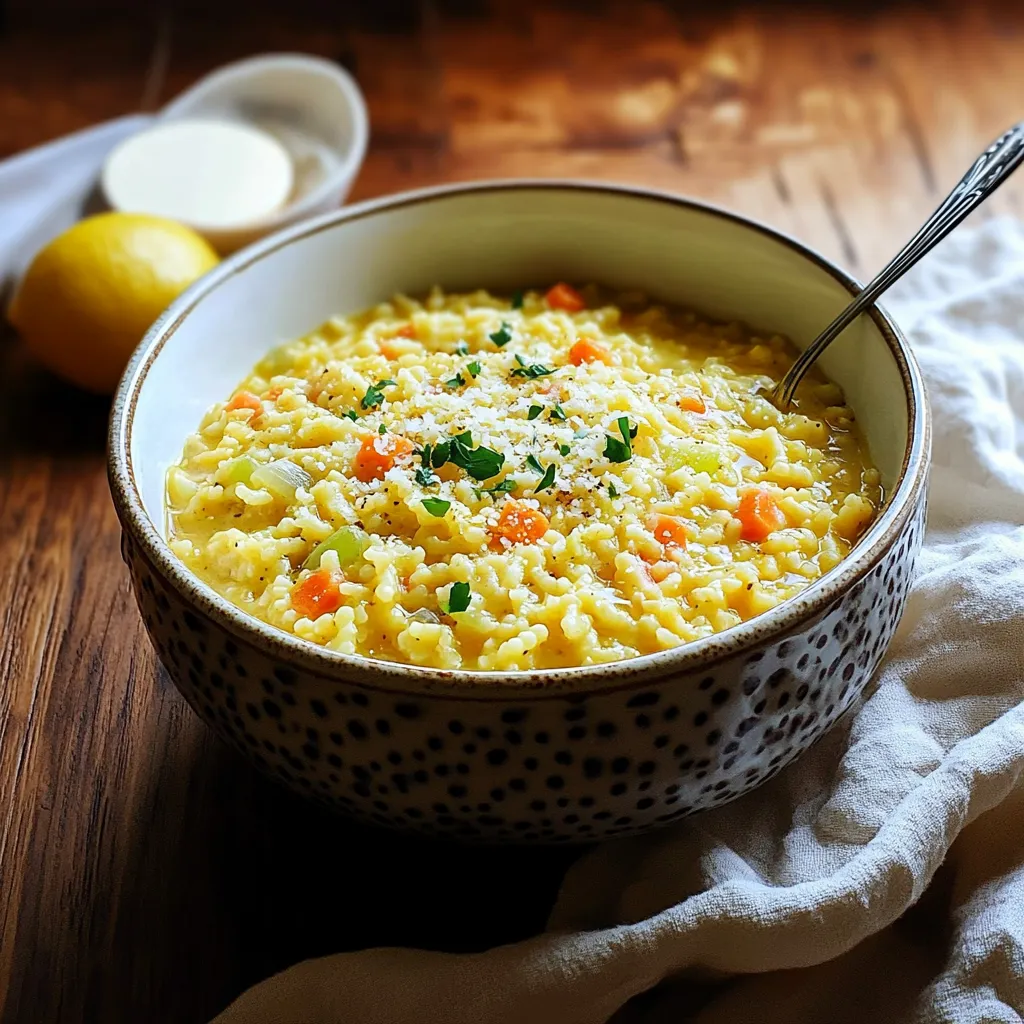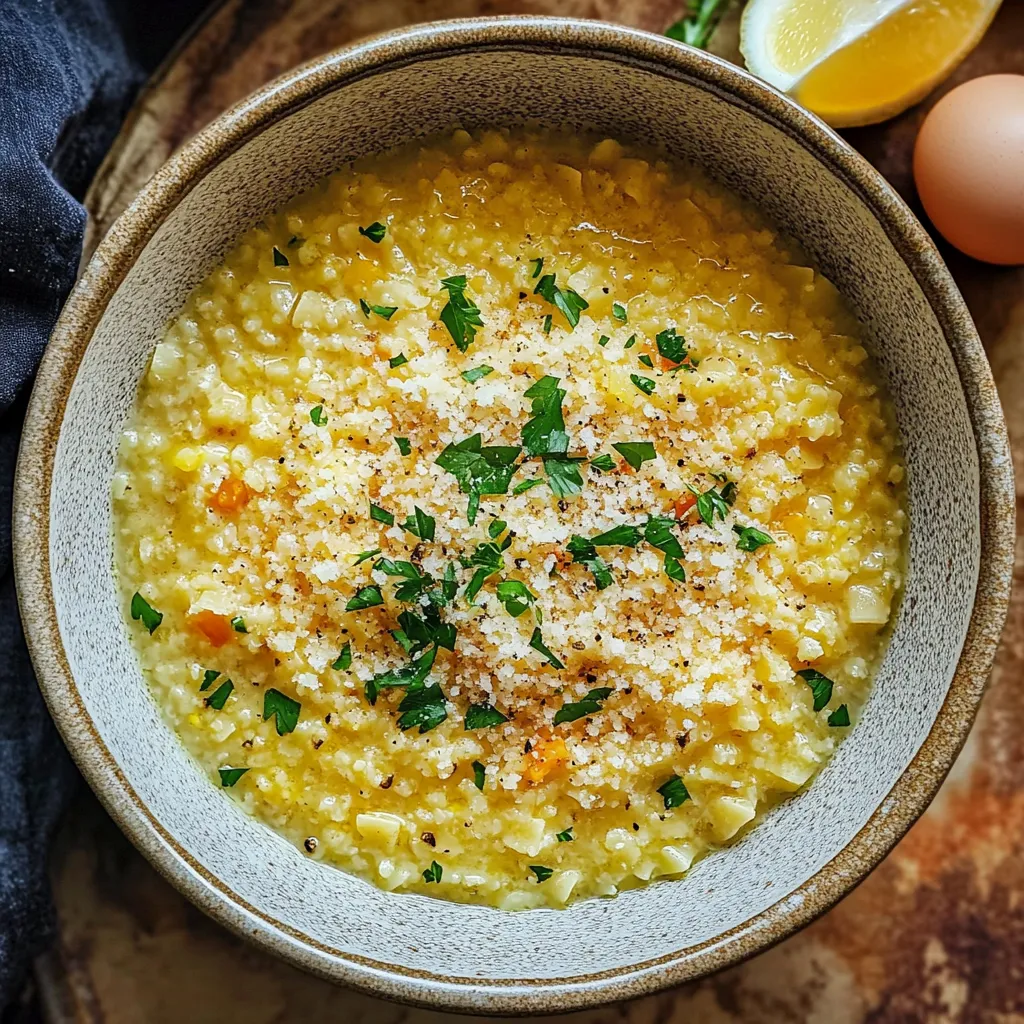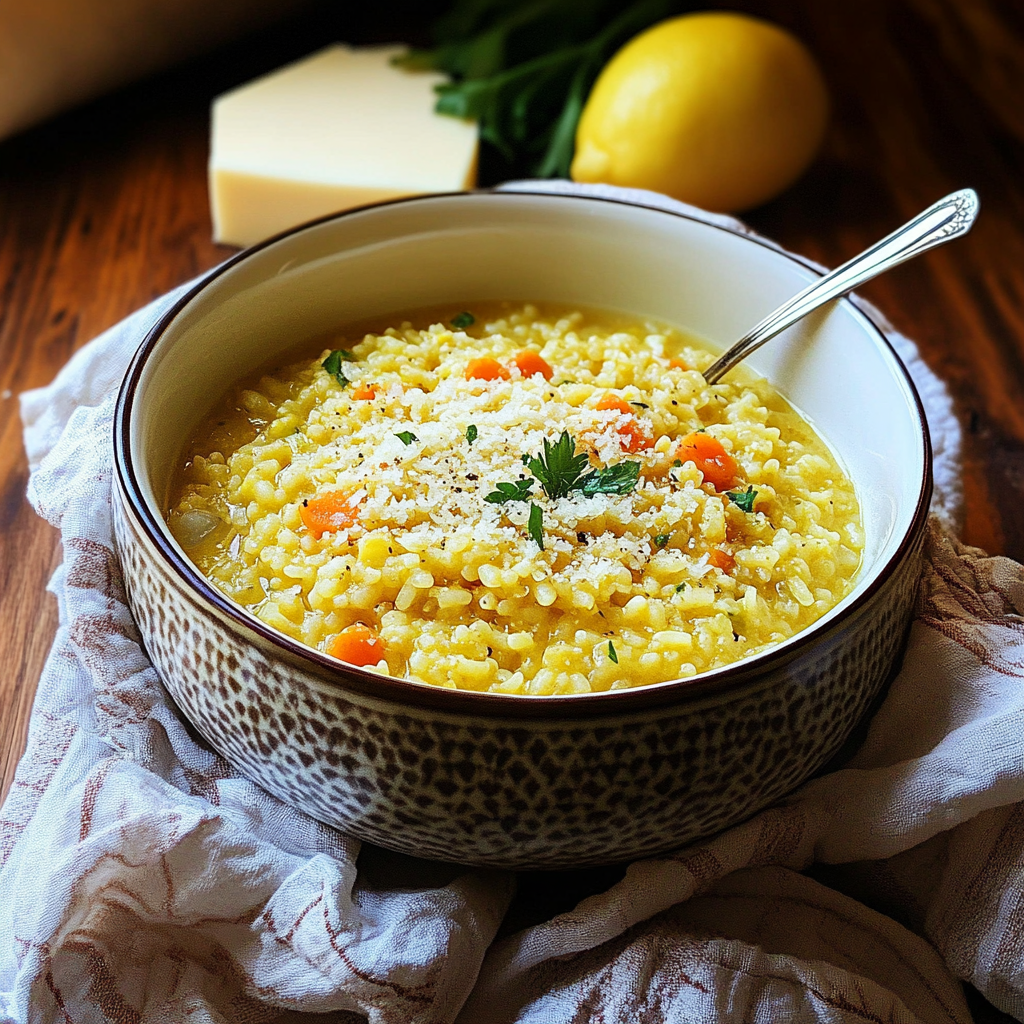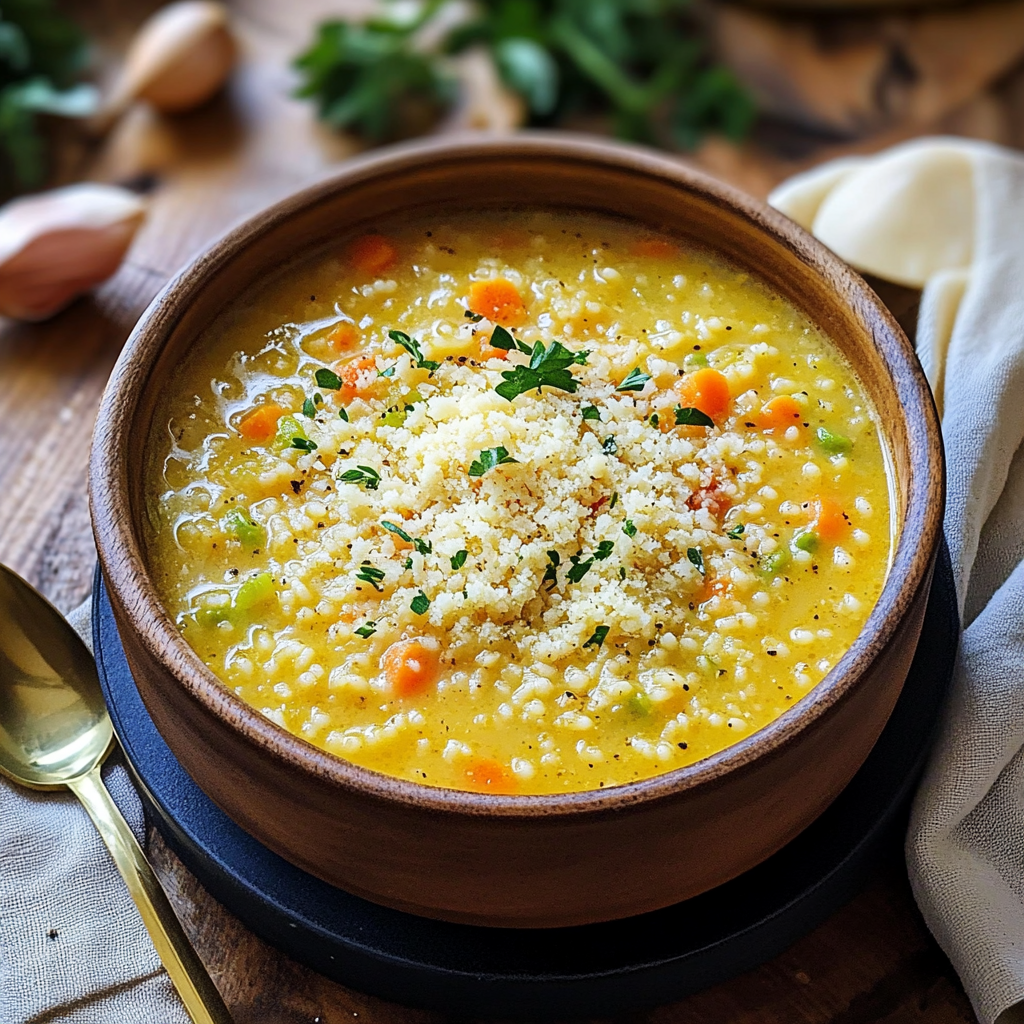 Pin it
Pin it
The modest pastina, lovingly dubbed Italian Penicillin, brings memories of countless Italian kitchens with each bite. This basic yet comforting meal turns simple items into a bowl that feels like your Italian grandma giving you a warm hug, just right for when you need something good for your body and soul.
I've made this for my family so many times, and I've found that what makes pastina special is how simple it is. When you're fighting a cold or just worn out after a busy day, this dish always cheers you up and warms your heart.
Must-Have Components
- Pastina pasta: Needs to be small and star-shaped - these tiny stars aren't just cute, they're the perfect size to bring comfort in every mouthful
- Chopped vegetables: Should be cut very small and evenly - this helps them cook properly and mix well with the tiny pasta
- Chicken bone broth: Creates the base - homemade is fantastic, but good quality store-bought works great too
- Genuine Parmigiano-Reggiano cheese: Really matters - its deep savory flavor can't be matched
- Fresh garlic: Must be chopped super fine - it should practically vanish into the soup
 Pin it
Pin it
Making Your Comforting Bowl
- Step 1:
- Start with your flavor base. Melt 2 tablespoons butter in a sturdy pot over medium heat. Toss in finely chopped onion, carrot, and celery. Cook slowly until they're soft and smell amazing, around 5-7 minutes.
- Step 2:
- Throw in minced garlic and cook just until you can smell it, about 30 seconds. It should turn light gold but never dark brown, which would make it taste bitter.
- Step 3:
- Add 6 cups chicken bone broth, 1/4 teaspoon turmeric, and some kosher salt and fresh black pepper. Let it warm up to a gentle bubble.
- Step 4:
- Put 1 cup pastina into the warm broth, stirring now and then so it doesn't stick. Cook until the pasta gets soft, about 4-5 minutes. The tiny pasta cooks very fast.
- Step 5:
- Take the pot off the heat. Mix in 2 tablespoons butter and 1/4 cup freshly grated Parmesan cheese, stirring until they melt completely.
- Step 6:
- Working fast, beat one egg in a small bowl. Pour it slowly into the hot pastina while mixing non-stop. The leftover heat will cook the egg, making a smooth, protein-rich texture.
- Step 7:
- Top with a bunch of chopped fresh parsley and a good squeeze of lemon juice. Taste it and add more salt or pepper if needed.
 Pin it
Pin it
My grandma always told me that real pastina should be thin enough to eat with a spoon but thick enough to make you feel better. She'd always say, 'If you don't feel better after eating it, you didn't cook it with enough love.'
Crafting True Comfort Food
I've noticed that pastina's healing touch comes from more than just what goes in it, but how carefully you make it. Every part, from slowly cooking the veggies to carefully adding the egg, adds to why it makes you feel good. It's a dish that needs your full attention, making the cooking itself part of what makes it so comforting.
Managing Your Heat
Getting pastina just right is all about gentle cooking: Keep your broth barely bubbling. Take it off the heat before you add the egg. Serve in warm bowls. Add your cheese bit by bit so it doesn't clump up.
Changing With The Seasons
While the basic recipe stays the same, I change things up throughout the year: Spring: Mix in fresh peas and soft herbs. Summer: Add diced zucchini. Fall: Put in tiny cubes of butternut squash. Winter: Mix in finely cut kale.
Adjusting For Special Diets
You can easily change this dish for different needs: Gluten-free: Grab some tiny gluten-free pasta. Dairy-free: Skip the cheese and use olive oil instead. Want more protein: Add some shredded chicken. Less salt: Go for low-sodium broth.
Food That Makes You Feel Better
After years of cooking pastina, I've seen how it seems to magically: Help sore throats feel better. Calm upset tummies. Give easy-to-digest nutrients. Make you feel emotionally better.
This isn't just some soup - it's a bowl full of care, handed down through many generations of Italian families. Whether you're making it for yourself or someone you care about, pastina has the power to help both body and mind feel better.
Creating The Perfect Base
Making great pastina broth is like writing a soft lullaby - each thing you add plays its part at just the right time. Good bone broth starts it all, but it's how you build flavors that makes that special comfort feeling: Start with soft-cooked veggies. Add herbs thoughtfully. Use just enough salt. End with bright flavors.
Tools You'll Need
After making this countless times, I've found certain kitchen tools really help: A heavy pot that spreads heat evenly. A wooden spoon for gentle mixing. A small grater for Parmesan and garlic. A soup ladle for serving right.
Quick Fixes
 Pin it
Pin it
When things go wrong: Too thick: Slowly add more hot broth. Too runny: Cook without a lid for a bit. Egg started to cook in chunks: Strain it and try again. Needs more richness: Add a bit more butter.
Serving It Right
How you serve matters, even for simple foods: Heat your bowls first. Have extra Parmesan ready. Offer fresh ground pepper. Include lemon wedges on the side.
Taking Pastina Further
Fun ways to change it up: Add tiny meatballs for something heartier. Mix in some spinach for more nutrients. Put in white beans for extra protein. Sprinkle crispy breadcrumbs on top.
I've made pastina for years now, and I've come to see it as more than just quick comfort food - it shows how often the simplest things can help us heal. Whether you're cooking it for someone with a cold or just need something warm after a long day, this dish carries generations of wisdom in every spoonful.
My Italian great-aunt always said, 'A bowl of pastina feels like getting a warm hug from the inside.' In our busy world today, we all need that kind of comfort sometimes.
Just remember, while how you make it matters, the most important thing in pastina is the care you put into making it. That's what turns this simple dish from just food into something that feeds your soul.
Frequently Asked Questions
- → What’s the pasta called pastina?
- It’s a teeny pasta shaped like stars. Orzo or other small pasta can work instead.
- → Why do they call it Italian Penicillin?
- It’s a comforting favorite in Italy, often made when someone has a cold or needs a pick-me-up.
- → Do I have to use the egg?
- Not at all! Skip it if you want. It just adds extra creaminess and protein.
- → How do I make it vegetarian?
- Switch the chicken broth for vegetable broth, and it’s vegetarian-friendly.
- → Leftovers—how should I keep them?
- Pop them in a sealed container in the fridge for 3 days. Add broth when reheating since the pasta soaks it up.
